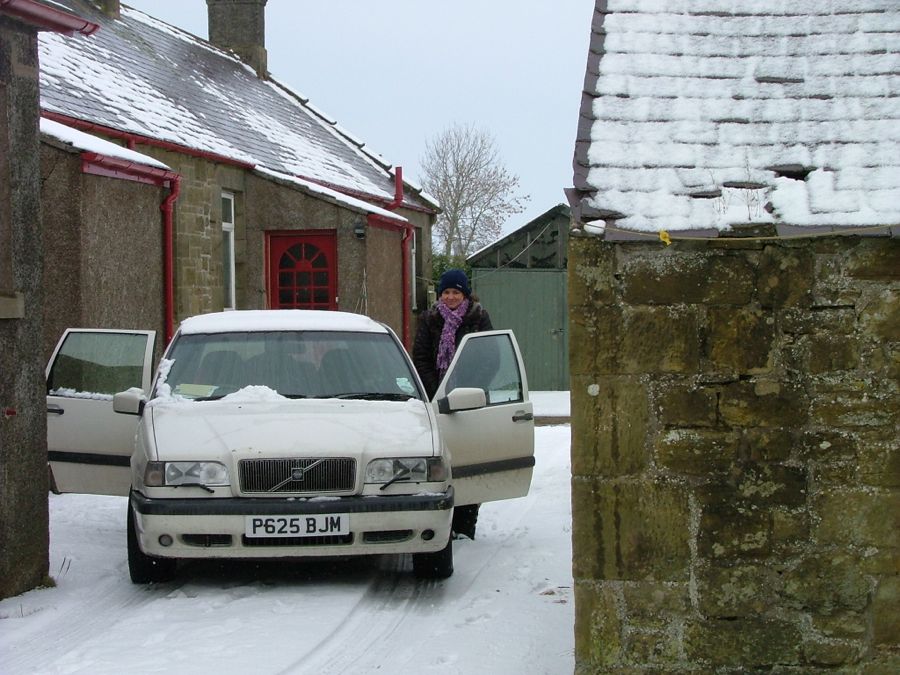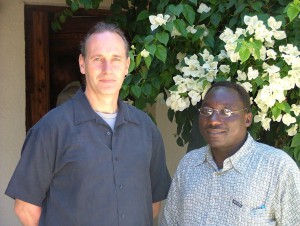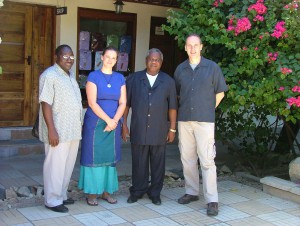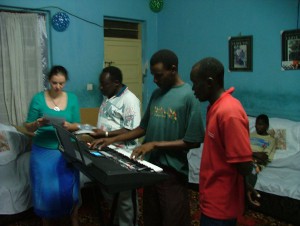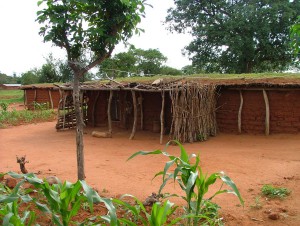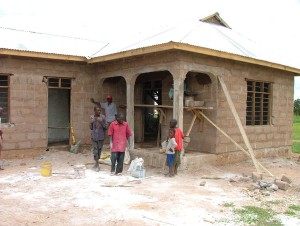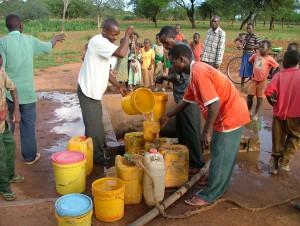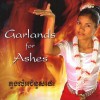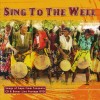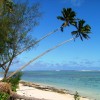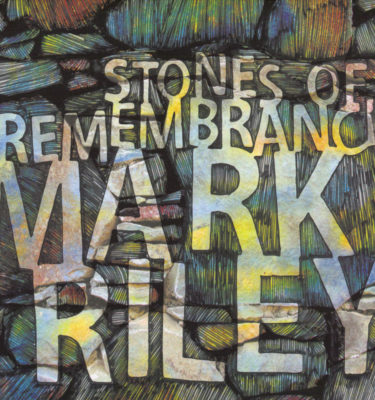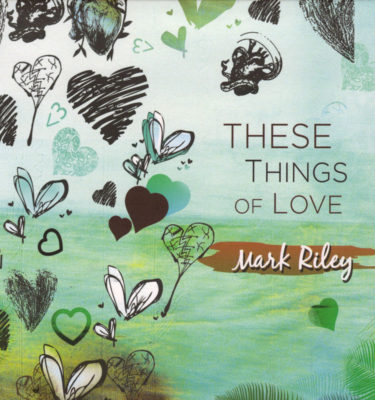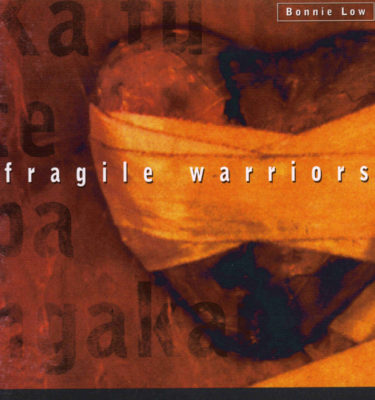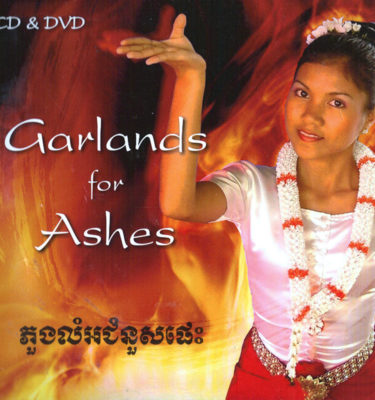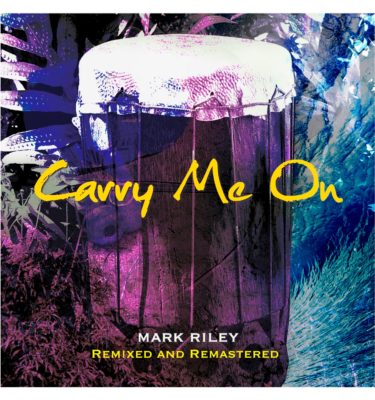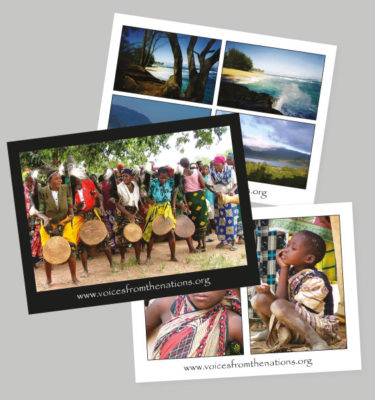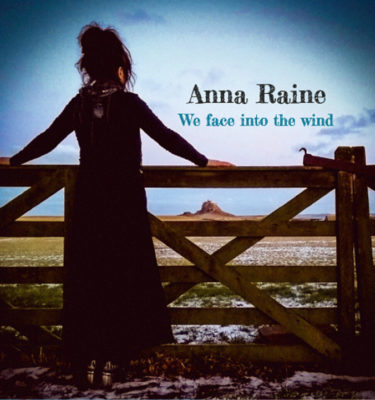Our journey started from snow covered Northumbria, skidding down the narrow icy lanes towards the A1 and ended 3 days later (after various forms of public transport – car, plane, taxi, dalai, coach and three wheeler cycle!) in hot and humid Dodoma which is situated in central Tanzania.
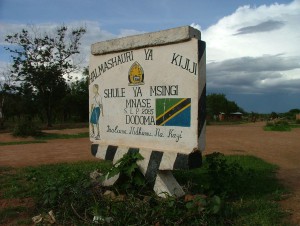 Tanzania, although one of the least urbanised, is East Africa’s largest country. With a diverse landscape of savannah, bush, lakes and highland plateau. It is renowned for its wild life, game reserves and Mount Kilimanjaro, (the highest mountain on this continent). Its 126 different tribal groups, each with their own heritage, are welded together by the Kiswahili language, a mix of Arabic and old Bantu originating from Zanzibar. Before 1972 this diverse group of people had no cohesion and lived in scattered pockets throughout the country. Between 1972 and 1974 under the Presidency of Julius Nyerere the Government forced these pockets into village formats.
Tanzania, although one of the least urbanised, is East Africa’s largest country. With a diverse landscape of savannah, bush, lakes and highland plateau. It is renowned for its wild life, game reserves and Mount Kilimanjaro, (the highest mountain on this continent). Its 126 different tribal groups, each with their own heritage, are welded together by the Kiswahili language, a mix of Arabic and old Bantu originating from Zanzibar. Before 1972 this diverse group of people had no cohesion and lived in scattered pockets throughout the country. Between 1972 and 1974 under the Presidency of Julius Nyerere the Government forced these pockets into village formats.
We have often asked the question why Mnase? In 1974 it was chosen as a regional centre surrounded by 4 other satellite villages. It was promised water systems, a medical centre with hospital and schools. The governmental dream never materialised. The chairman of the village remarked to Rebekah and I, “The government promised us everything and gave us nothing, you have promised us nothing and given us everything.” God had His own story to write amongst these people.
After 3 days travel we were still not at our destination …. The village lies 2 hours outside Dodoma and there is only one bus (a very loose term) that travels there once a day during the weekdays. We had arrived on Friday afternoon and so our first weekend was spent staying with our good friend and host Seth Gidiony.
During our stay in Dodoma we visited many people and heard many stories of hardship including Seth’s pastor Fenias who was very ill (moved to a hospital 6 hours away in Dar es Salaam). We visited his wife and family of 7 children, 2 married, trying to survive without their breadwinner. There is no welfare system, so this family were being completely supported by the church family. Before we left the country we went to visit the pastor in hospital, sadly he died a week later.
We also had breakfast with the Minister of Infrastructure for Tanzania, the Hon. Hezekiah Ndahani Chibulunje (we had met him in 2005 when the Government had sent an envoy to meet us and hear about the Sing to the Well project). 2 years ago the World Bank offered finance to help remote villages in the Dodoma region with drilling wells. There stipulation was that each village had to come up with 2 million TZS and they would contribute 25 million TZS. The chairman of Mnase village asked Seth to relay this situation to us and we sent the 2 million out to the village, they have put this into an account and it is still sitting there! The World Bank then delivered the 25 million and it is now somewhere in the Governmental system. Our meeting was to ask where this money was and to discuss next steps. Sadly, the answer was a ministerial answer “It’s in process”. When the money is released they plan to dig a deeper well and restore another water system within the area that was put in place many years ago and has not been working for a couple of decades.
Many people in the West become frustrated (understandably so) by inconsistencies within the political and governmental infrastructure …. often their words can be misleading and some say not trustworthy. A remark made by Hezekiah in 2005 made me rethink, “Martin, you have seen one village in trouble, we see a troubled country”. With a Gross National Income of just over $2 a person any money that comes in has to go to the neediest situation, not necessarily the project earmarked for the donation.
If you remember from our last report we were hoping to take an electronic keyboard for one of the churches in Dodoma. As you can imagine there was much joy when we were able to pass on the gift donated by a musician friend in the States. The interesting story was getting it into the country ….. when we arrived a custom official tried to pocket 200,000 TSH for us to bring the keyboard into the country. When we said we did not have that money on us … he gave himself away by replying “How much can you afford?” Sadly this was not the only story of corruption during our trip to Africa. We called his bluff, and finally after the usual waiting game … he got fed up and let us through!
Early Monday morning we set off to Mnase village in what can only be described as a metal moving object crammed to absolute capacity with people, chickens and general household objects. This picture gradually got worse as people finding no room through the doors started climbing in through the windows ….. and every once in a while there would be startled looks at the realisation that there were Msungu’s (white people) on the bus!
It was wonderful to be back in the village, and very quickly there was a crowd of well wishers wanting to show us all the changes in the village. In 2005 it was a church bell, heard in the distance that brought our attention to the fact that there was more that one denomination. When we asked our host about meeting up with the leader of the Anglican Church he was very wary and tried to put us off. We eventually persuaded him to arrange a meeting with the other pastor. It was a very tense situation at first but as we told Rebekah’s story of a family who had hundreds of years of Anglican history starting with John Rogers a man who was martyred for his faith, something broke and we left with gifts of friendship. Two of the people who greeted us on our return were the pastors, who are now working together and best of friends.
Next stop was to see the progress of the medical dispensary. The building project has brought jobs to men from Mnase and an adjacent village. At the moment the only medical help is a visiting doctor, once a month, for pregnant women and children under 5. Men, children over 5 and all other women have to walk or cycle 10km to the nearest small dispensary. Inside the new unit will be a waiting room a doctor’s room, an inoculation room and dispensary hatch, a store room and 2 small bedrooms for men and women. For more pictures and video clips here.
The people are starting to own the project but it has been an interesting journey for them. A large pile of rocks for the foundations of a planned medical centre had been standing idle for many years. The obvious strategy was to use these for the new dispensary …. but they had to be moved? When the chairman suggested this to his people they (as we now know) wanted paying. He refused and wisely decided on a different approach. When people came for his advice, he would refuse until they had moved 2 stones to the new dispensary site and punishment became a small monetary fine and moving 20 stones.
We learnt much about the notoriety of the Gogo people, they are known for only thinking of themselves, being argumentative and beggars. In fact we were told that there is a van that travels around the country collecting beggars from the streets and they are returned to the Dodoma region – if they are beggars then they must be Gogo people. In conversation with Seth’s next door neighbour in Dodoma who had recently moved to the area, I asked if there were any differences between her people group and the Wagogo she replied, “Oh, there all beggars here”. During the famine in 2003 Seth took food in a large truck to Mnase village where people were starving yet when he arrived and asked for help to unload the maize. There reply was, “How much will you pay us?”
The amazing thing is that we are starting to see a turnaround happening within the village. Our accommodation and food were taken care of by the village – an honour that made Seth almost speechless.
Seeing the renovated water pump working was very moving and hugely exciting. A dream in 2005 had become a reality. The village committee had decided to charge 20 TZS for a container of water (about 0.1 pence), this enables someone to be employed to look after the pump, pay for the fuel and allow people from the 4 other satellite villages to collect water. For more pictures and video clips here.
During the next 4 days we wandered around the village with Seth, the chairman of the village and a member of the committee learning more about the way of life in a rural Tanzanian community. We visited the primary school again, the new partly built secondary school, with hardly any resources, which is hoped to serve all 5 local villages and where 4 teachers are trying to teach 250 pupils. An irrigation system with water tanks that was again started and never finished (sadly as you drive through Tanzania the landscape is dotted with many building projects that have not been completed). The once monthly clinic where newborns were weighed using scales hanging from a tree, and heard about medical issues, most men die from kidney stones, women and children die in childbirth, blindness and general eye diseases are a major problem.
The rest of the time was spent just sitting and chatting – trying to explain cremation and lifts to a people who had never heard of such things. Fortunately English humour went down well and a favourite theme was our use of “It’s in process” (taken from our meeting with the minister). This was always a trigger for endless joking.
One younger man who has become a business man through selling Baobab fruit to the big city, Dar es Salaam (he brought the first mobile phone to the village, another story) has seen magazines of London and New York and now has dreams of making his fortune in England and America. We spent many hours discussing the pros and cons about our different life styles. Towards the end of the conversation we suggested that maybe the hardest cultural hurdle for them to understand would be the role of men and women. In the UK men often cook, look after their children and women may go out to earn the main wage, that men and women will hold hands walking down the street and would sit together and chat. (In Mnase there are defined roles for the men and women and generally men sit and chat with men and women with women). There was a pause and then one of the men said “Martin, these things we could learn but men and women sitting together talking in one room – that is like putting a leopard in with a goat!”
Another highlight was showing the village people the video, photos and playing the music we had recorded in 2005. There were screams of delight as they saw themselves on screen. One evening we had to postpone our showing as the word had got out, so many people turned up that structural supports for the tin roof came away and it looked like it was going to fall on top of us all. We made a hasty get away – there was much laughter that night retelling the story of how the Msungu’s nearly wiped out a village population.
Please pray for the next stage in the dispensary project …….. The building to be completed, stocked with medical supplies and furniture, and to find someone to work at the dispensary.

